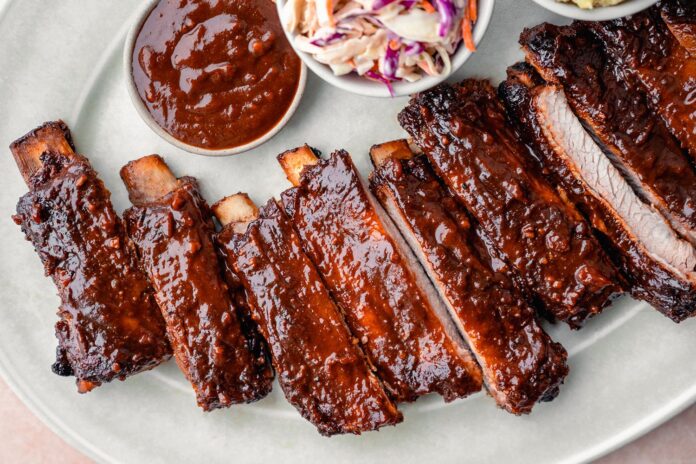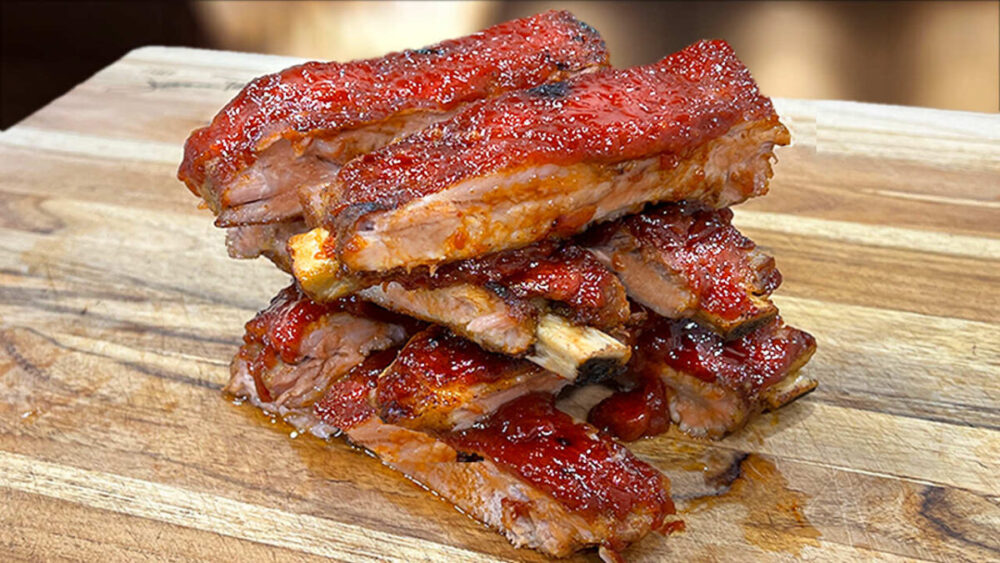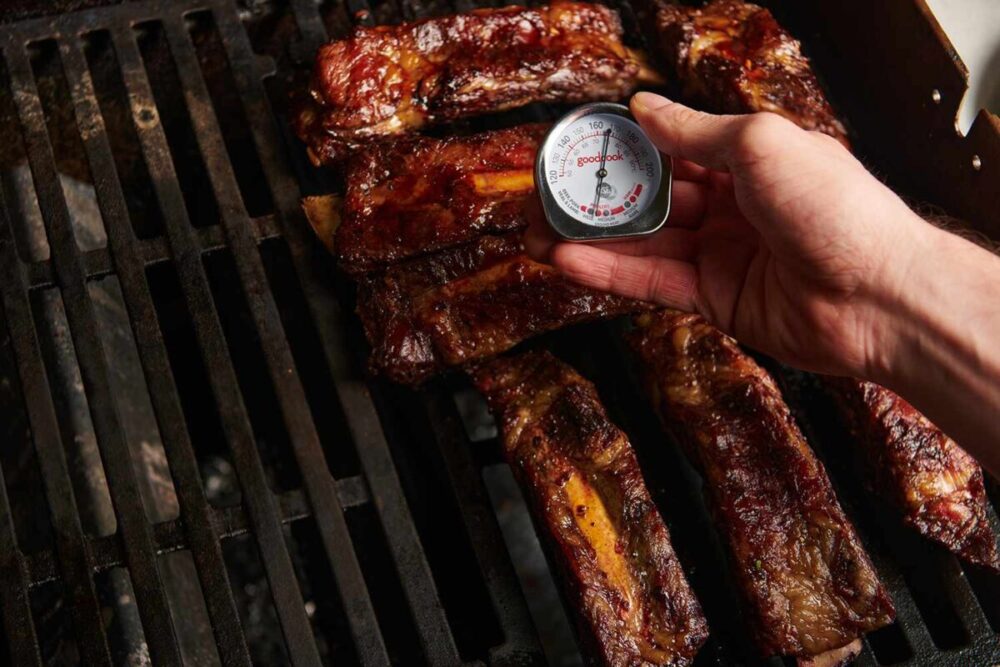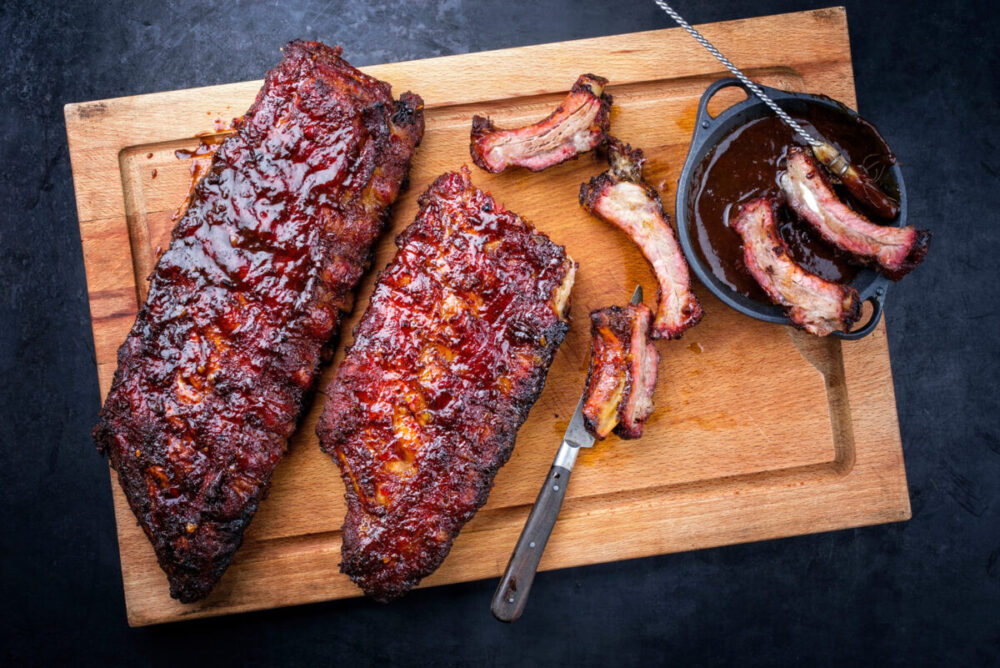
There’s something about the sight and smell of perfectly cooked BBQ ribs that can make mouths water and hearts race. When done right, BBQ ribs are a culinary delight—a combination of smokey, savory, and sweet flavors, all married together in a perfect blend of taste and texture. They are the crowning jewel of any barbecue, and their perfection lies in mastering the craft of slow cooking to achieve that fall-off-the-bone tenderness.
Low and slow cooking involves maintaining a consistent, low cooking temperature over an extended period, allowing the connective tissues in the ribs to break down and become incredibly tender without overcooking the meat. This culinary method requires patience and precision but results in ribs that are succulent, juicy, and bursting with flavors, especially when paired with dry rubs for BBQ ribs.
Selecting Quality Meat for Delicious Ribs

When it comes to barbecuing or creating a tasty pork rib dish, choosing the right meat is key for a successful outcome. Assessing the best ribs includes several factors; the appearance of the meat is the initial clue to its quality – you should look for ribs with a uniform pink color, boasting white streaks of fat, as this adds to the flavor and tenderness during the cooking process. Additionally, the meat should not appear overly dry or have signs of discoloration.
The rib cut is also worth considering. Different cuts of pork ribs each offer unique characteristics, such as baby back ribs, spare ribs, and St. Louis style ribs, to mention a few. Baby back ribs, sourced from near the spine, usually have less fat and are smaller, leading to quicker cooking times. In contrast, spare ribs, located at the ribcage’s lower portion, have more flavor owing to greater fat content, yet they require more time to cook. St. Louis style ribs resemble spare ribs but are cut into a uniform rectangle, promoting consistent cooking and ease of consumption. Recognizing these distinctions helps in selecting ribs that align with your preferred cooking style, time constraints, and taste goals, ensuring the final dish is delicious.
Getting Ribs Ready for the Grill
When it’s time to grill ribs, several important preparation steps can greatly enhance their flavor and texture. Begin by cutting away any excess fat, which can help prevent unwanted flare-ups and promote uniform cooking. Then, dedicate a moment to peeling off the slim membrane found on the rib’s lower side; doing so will let the seasoning absorb more deeply into the meat and result in a softer bite. Once your ribs are properly prepared, it’s seasoning time. You’re faced with two prevalent choices: marinades and dry rubs.
Marinades infuse the meat with both flavor and moistness, potentially softening it. They demand preplanning since the ribs should be immersed for several hours or overnight. Dry rubs, in contrast, are combinations of herbs and spices that coat the meat directly. They create a flavorful crust and suit those looking for a simpler quicker method. Each technique has its own merits, so the decision often relies on individual taste and the level of flavor sought for your grilled ribs.
Mastering the Low and Slow Cooking Technique

When exploring the culinary arts, one method stands out for its ability to transform the simplest of ingredients into something extraordinary: low and slow cooking. This technique, widely popular for its ability to bring out complex flavors and achieve melt-in-your-mouth tenderness, relies on two factors: temperature control and time. By maintaining a low cooking temperature, often between 200°F to 275°F, the tough fibers in meats gradually break down without the risk of overcooking or drying out.
The gentle heat allows connective tissues to transform into gelatin, ensuring a tender and moist result. The extended time not only allows for the distribution of spices and the blending of flavors but also creates a complexity and depth that cannot be rushed. Whether it’s a succulent brisket, a hearty stew, or a rich slow-cooked tomato sauce, mastering the low and slow cooking technique promises a rewarding experience.
Managing Your Cooking Environment
The choice of smoker or grill can make a big difference in your culinary adventures—a bullet smoker, offset smoker, electric smoker or even a classic kettle grill each offer unique benefits that align with different preparation styles and flavor profiles. While considering the best fit for your outdoor kitchen, it’s important to understand the role of smoke, which acts as a silent maestro in the background, conducting a complex interplay with the meat.
When smoking ribs, for example, the type of wood used—be it hickory, apple, or mesquite—can enhance the pork, bringing out the smokiness that BBQ aficionados crave. Achieving the perfect BBQ rib recipe is as much about the embrace of the smoke as it is the seasoning and cook time; its infusion enhances the ribs’ exterior to create that sought-after bark, while gently permeating the meat for a succulent, tender finish. Choosing the right equipment and mastering the use of smoke is the key to managing your cooking environment.

Finishing Touches for Delectable Ribs
When it comes to perfecting a mouthwatering rack of ribs, the final stages are key. Starting with glazing and saucing strategies, remember that timing is everything. As the ribs near completion, that’s your cue to slather on your favorite sauce or glaze. Doing so in the last 20-30 minutes of cooking caramelizes the sauce and locks in moisture without burning it.
Choose a sauce with a good balance of flavors—sweet, tangy, and spicy can truly bring out the taste. After cooking, here’s where patience really pays off: the resting period. Allowing your ribs to rest for about 10 minutes gives the meat fibers time to relax and reabsorb their juices, which ensures each bite is tasty and tender. Rushing this step would lead to drier, less flavorful ribs, so resist the temptation to dig in immediately.
Barbecue excellence doesn’t happen overnight. It calls for persistence and detailed attention. Remember, the secret of softness is found in managing the heat, keeping a steady stream of smoke, and mastering the timing and application of sauces and seasonings. This proficiency and command over the process can turn an average dish into an exceptional one. As you continue refining your abilities, do be afraid to try out new approaches. Every pitmaster brings a distinctive flair, and it’s through exploring innovative methods and taste pairings that you’ll discover your own barbecue distinctiveness.








